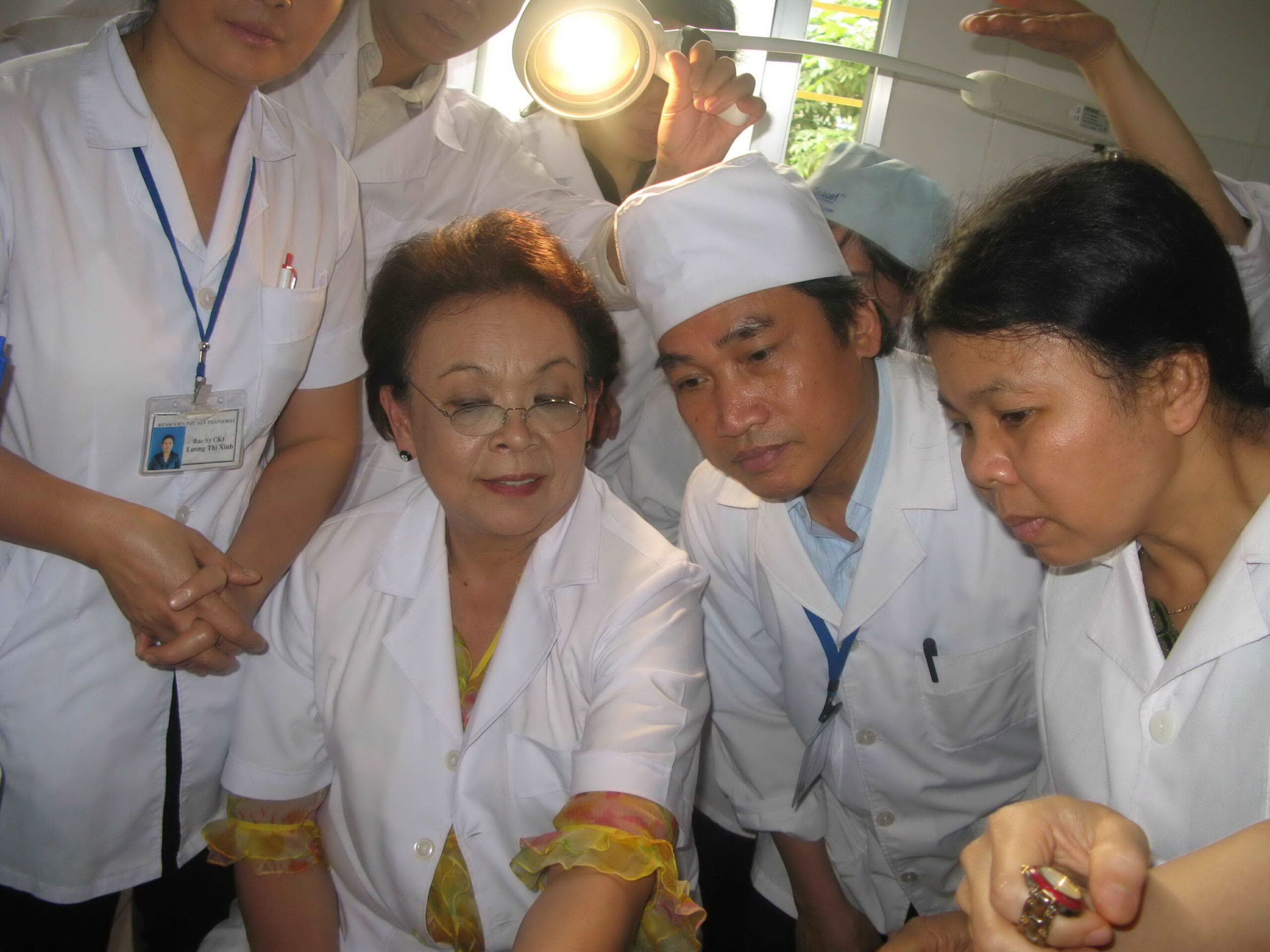
We are closer than ever to eliminating cervical cancer. The World Health Organization affirmed the likelihood that cervical cancer can be eliminated within the lifetime of today’s young girls. But this is not news or even a revelation for Dr. Khunying Kobchitt “Kobbie” Limpaphayom, who has dedicated her life’s work to improving women’s reproductive health, including reducing deaths from cervical cancer, in Thailand and beyond.
A student of Jhpiego’s founder, the late Dr. Theodore M. King of Johns Hopkins University, Dr. Kobbie spent more than four decades in Thailand’s rural communities testing and treating women to prevent cervical cancer and in classrooms at Chulalongkorn University in Bangkok training generations of health workers, including today’s leaders in cervical cancer, to do the same.

Dr. Kobbie has changed the lives of many women and girls and their families. Like most countries, four decades ago Thailand was struggling to prevent, screen and treat cervical cancer. In 2000, Dr. Kobbie, in partnership with Jhpiego, the government of Thailand, the Roi Et Provincial Health Office and the Royal Thai College of Obstetricians and Gynecologists, began implementation of the SAFE (Safety, Acceptability, Feasibility, and program Effort) study, which used a method called visual inspection of the cervix with acetic acid (VIA). VIA uses diluted acetic acid, the basic component of household vinegar, to detect precancerous lesions on the cervix, which turn white when they react with the acid. If lesions were found, patients could be treated immediately in a single visit approach (SVA) or referred for treatment of advanced lesions.
This simple, low-cost screening method does not need electricity, sophisticated labs or equipment. But it did need to catch on among rural populations. So, Dr. Kobbie and her team of clinical trainers led the charge training nurses and general practitioners. They also trained public health volunteers and community health workers to engage and mobilize the community to support and encourage women to participate in the screening campaigns and spread the word.
One of the objectives of the SAFE study was to convince medical and public health policy stakeholders that nurses could perform SVA and meet the four criteria of safety, acceptability, feasibility and effectiveness. “Before the training and awareness campaigns, a lot of people did not believe in the way I used the vinegar,” Dr Kobbie said. “It was very difficult for both the public and the ob-gyn community themselves to accept it.”
However, over time, they did accept and expand SVA. Thanks to a combination of screening methods, including VIA, the incidence rate in Thailand went from 18.1 per 100,000 women in 2001 to 11.1 by 2018.
Other governments started to take notice. Dr. Kobbie traveled to Uganda, Laos, Vietnam, Myanmar and several other countries to help implement SVA. The use of this successful approach continued to grow—so much so that, in 2018, the United Nations presented its Public Service Award to the Provincial Health Office of Roi Et for its integrated approach to comprehensive cervical cancer control, the single visit, screen-and-treat approach. As Dr. Kobbie, who traveled to Morocco to receive the award, said, “The single visit approach helped in giving women easier access to care by bringing care closer to their homes,”
At her core, Dr. Kobbie is a realist. She understands that SVA can’t eliminate cervical cancer. Primary prevention—HPV vaccination and promotion of healthy practices—must also be a priority.
In 2017, the HPV vaccine was introduced into Thailand’s national immunization program for 11- to 12-year-old schoolgirls. But a host of complexities made it hard for people to access the vaccine, especially in Thailand’s rural provinces. Because Thailand is considered an upper-middle-income country, the government must procure vaccines from the open market, rather than rely on heavily subsidized or free vaccines from Gavi, the Vaccine Alliance. And, it’s an age-restricted vaccine, meaning only people who fall within the right age group (females ages 9 to 26 years and males ages 13 to 21) can receive it.
For cervical cancer rates to continue to decline, the tried-and-true methods that Dr. Kobbie has worked hard to spread cannot be discounted, especially for those out of the vaccine age range.
“By the time we had a usable vaccine, there were so many women with HPV,” says Dr. Kobbie. “Those women will always have that question in their mind about if they already have the HPV strain that causes cancer. That’s why I say, ‘Don’t be shy. Go and get screened.’”
In 2001, shortly after Dr. Kobbie began using SVA, cervical cancer was the second most common cancer among women in Thailand. Two decades later, in 2022, it had dropped to fourth.
“My hope is that cervical cancer will never be more prevalent than it is right now,” she says. “I’m still working. I’m still teaching because I want to inspire the younger generation to be good doctors. I want to teach them that every cervical cancer patient is a human being, just like your sister or yourself.”
Ricky Lu, Senior Technical Advisor at Jhpiego, also contributed to this article.



